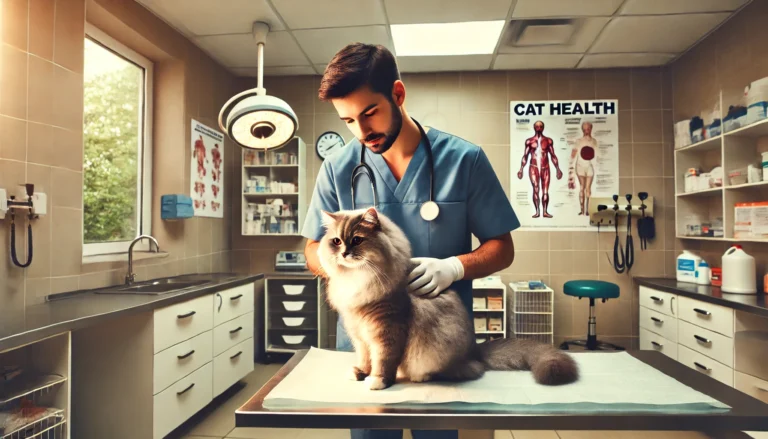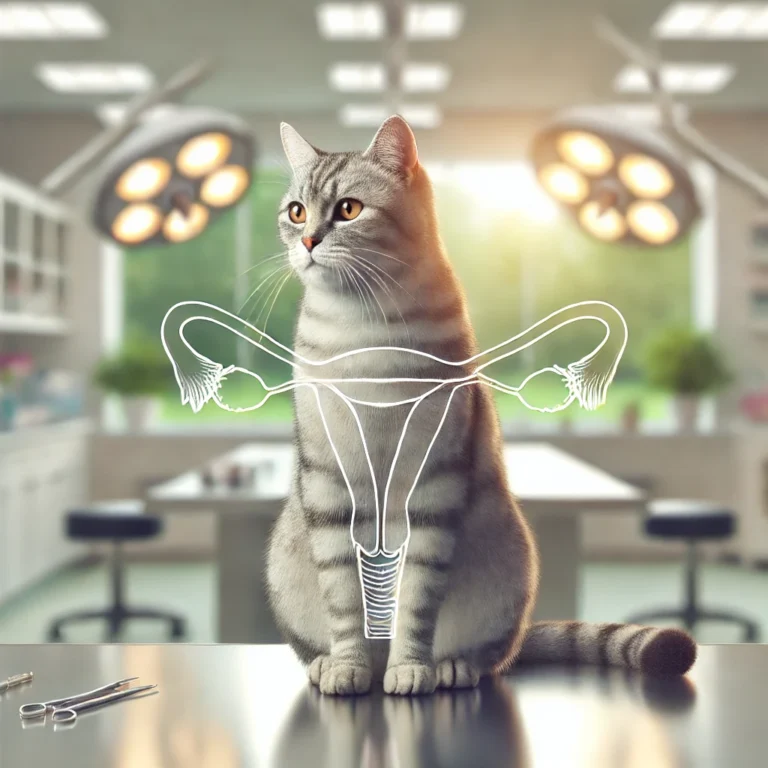Skin Fungal Infections in Cats

Skin fungal infections are a common concern for many cat owners, and understanding them can ensure that your feline friend stays healthy and happy. This article will delve deeply into skin fungal infections in cats, including causes, symptoms, diagnosis, treatment options, and preventive measures. Our goal is to provide you with a comprehensive, reader-friendly guide to support your cat’s skin health.
What are Skin Fungal Infections in Cats?
Fungal infections affecting the skin of cats are more common than many pet owners realize. These infections typically involve microorganisms such as dermatophytes (ringworm), yeast, and molds that live on the skin and cause irritation, inflammation, and infection.
Fungal infections can vary in severity from mild to chronic, and understanding the different types can help with quicker identification and treatment.
Types of Skin Fungal Infections in Cats
There are several types of skin fungal infections that affect cats, with the most common being ringworm, yeast infections, and fungal dermatophytes.
1. Ringworm (Dermatophytosis)
Ringworm is the most common fungal infection in cats. Despite the name, it is not a worm but a fungal infection that affects the skin, hair, and nails. Ringworm often forms round, scaly patches on the skin and can spread rapidly.
- Symptoms: Red, scaly, and circular lesions; hair loss; crusty or inflamed skin.
- Causes: The dermatophytes responsible for ringworm are spread through direct contact with infected cats or contaminated surfaces.

2. Yeast Infections (Malassezia)
Yeast infections in cats, particularly those caused by the fungus Malassezia, are another type of fungal skin infection. These infections often occur in moist, warm areas of the body, such as under the armpits, around the ears, or between the toes.
- Symptoms: Redness, itching, a waxy discharge (especially from the ears), and a strong, unpleasant odor.
- Causes: Yeast overgrowth is often triggered by a weakened immune system, underlying health conditions, or prolonged antibiotic use.
3. Molds and Other Fungal Infections
Although less common than ringworm and yeast infections, molds and other fungal pathogens can cause skin infections in cats. These infections typically occur in cats with compromised immune systems.
- Symptoms: Similar to those of ringworm and yeast infections, with additional signs like wounds that fail to heal or abscesses.
- Causes: Exposure to contaminated environments such as decaying organic matter or damp, poorly ventilated areas.
Signs and Symptoms of Skin Fungal Infections in Cats
Recognizing the signs of a fungal infection early can make a significant difference in the treatment outcome. Cats are skilled at hiding discomfort, so observing changes in behavior and appearance is crucial.
General Symptoms to Look For:
- Hair loss (Alopecia): Patchy hair loss, particularly around the head, ears, and paws.
- Red, scaly patches: Fungal infections often lead to dry, crusty, or inflamed skin.
- Itching and Scratching: Cats infected with a skin fungus may scratch excessively or groom more than usual.
- Odor: An unpleasant smell, especially around the ears or paws, can indicate a yeast infection.
- Foul discharge: Yeast infections, in particular, may cause a discharge from the ears or skin.
- Lethargy and loss of appetite: In severe cases, cats may appear unwell, showing signs of fatigue or reduced appetite.
If you notice any of these symptoms, it is essential to consult with a veterinarian for an accurate diagnosis and prompt treatment.
How Fungal Infections are Diagnosed in Cats
Diagnosing a fungal infection requires a veterinary examination and may include several methods to identify the pathogen causing the problem.
1. Physical Examination
Your veterinarian will start by performing a thorough physical exam. This may include checking for typical signs like hair loss, lesions, and inflammation on the skin.
2. Wood’s Lamp Test
A Wood’s Lamp is a special ultraviolet light used to identify certain types of fungi, especially ringworm. In some cases, the fungal infection will glow under the light.
3. Fungal Culture
A fungal culture is the gold standard for diagnosing fungal infections. A small sample of skin or hair is collected and placed in a special medium to grow the fungus. This can take several days to a couple of weeks, but it is a reliable method to pinpoint the exact fungus responsible for the infection.
4. Microscopic Examination
A sample of the skin, hair, or scabs is examined under a microscope to check for fungal elements. This can help diagnose certain fungal infections like ringworm.
5. Skin Biopsy
In some cases, if the infection is persistent or severe, a skin biopsy might be necessary to get a more detailed analysis of the infection.
Treatment Options for Skin Fungal Infections in Cats
Effective treatment for fungal infections in cats requires a comprehensive approach that may include topical therapies, oral medications, and environmental management.
1. Topical Treatments
For mild infections or as part of a broader treatment plan, your veterinarian may recommend topical antifungal creams, shampoos, or ointments. These treatments directly target the infected areas of the skin.
- Shampoos: Medicated shampoos containing antifungal agents like miconazole or ketoconazole can help reduce the fungal load on the skin.
- Creams and Ointments: Topical antifungals such as clotrimazole or terbinafine can be applied directly to the affected areas.
2. Oral Medications
For more severe or widespread infections, oral antifungal medications are often necessary. These medications may include:
- Griseofulvin: A commonly used oral antifungal for treating ringworm.
- Itraconazole: An antifungal drug often prescribed for more extensive fungal infections.
- Terbinafine: Another oral antifungal that can be effective in treating skin fungal infections.
3. Medicated Baths
In severe cases, a full-body antifungal bath may be required to ensure the entire body is treated. This is often combined with other treatments, such as oral medications, for optimal results.
Managing the Environment to Prevent Reinfection
Since fungal spores can survive in the environment for long periods, managing your cat’s environment is essential to prevent reinfection or spread to other animals.
1. Cleaning the Home
Thoroughly clean areas where your cat spends time, such as bedding, litter boxes, and grooming tools. Use antifungal cleaners to disinfect these surfaces.
- Wash bedding regularly.
- Sanitize litter boxes frequently.
- Vacuum often to remove fungal spores that may be present in the environment.
2. Isolation of Infected Cats
If you have multiple cats and one is infected, it’s essential to isolate the infected cat from others to prevent transmission. Fungal infections are highly contagious, especially in shared environments.
3. Avoiding Damp Environments
Fungal infections thrive in damp environments, so keep your cat’s living area dry and well-ventilated. Avoid prolonged exposure to humid or wet conditions, especially in cats prone to yeast infections.
Preventing Skin Fungal Infections in Cats
Prevention is always better than treatment. While not all fungal infections can be prevented, there are several proactive steps you can take to reduce the likelihood of an infection occurring.
do you know
Itching, or pruritus, is a response to irritation in the skin. Cats will often exhibit scratching, licking, or biting behaviors to relieve the discomfort caused by itching. When itching becomes persistent, it’s important to pay attention to the symptoms and investigate the cause.
1. Regular Grooming
Regular grooming helps keep your cat’s skin healthy. Brushing your cat’s fur removes debris, excess oils, and dead skin cells, which can harbor fungal spores. It also allows you to inspect your cat’s skin for early signs of infection.
2. Boosting Immunity
A healthy cat is less likely to develop fungal infections. Ensuring your cat is on a nutritious diet, free from stress, and up-to-date on vaccinations and parasite prevention can help maintain a strong immune system.
3. Minimizing Exposure to Infected Animals
Try to avoid exposing your cat to other animals that are showing signs of a fungal infection, especially in areas like shelters, boarding facilities, or grooming parlors.
4. Avoiding Overuse of Antibiotics
Prolonged or unnecessary use of antibiotics can disrupt the natural balance of microorganisms on your cat’s skin, potentially leading to fungal infections. Always follow your veterinarian’s recommendations regarding medication use.
Conclusion
Skin fungal infections in cats are a common yet manageable condition that can cause discomfort and harm if left untreated. Understanding the symptoms, causes, and available treatments will help you respond quickly and effectively. By maintaining a clean environment and ensuring your cat is in good health, you can reduce the likelihood of fungal infections and improve your feline’s overall well-being.
How to treat skin fungal infection in cats?
To treat a skin fungal infection in cats, it is important to first consult a veterinarian for proper diagnosis and treatment recommendations. The most common fungal infections in cats include ringworm and yeast infections. Treatments typically involve antifungal medications, either topical or oral, depending on the severity of the infection. Topical treatments like antifungal creams, shampoos, or sprays are effective for localized infections, while oral antifungal medications may be necessary for more widespread infections. It’s also important to clean and disinfect the cat’s living environment to prevent the spread of the fungus. Managing the overall health of the cat, including immune support, is also crucial in treating the topic effectively.
How can I treat my cat’s skin infection?
Treating your cat’s skin infection involves several steps. First, you must visit a veterinarian to identify the cause of the infection. If it’s a fungal infection, such as ringworm or a yeast infection, the vet will recommend the appropriate treatment, which may include antifungal topical medications like creams, shampoos, or sprays. For more severe cases, oral antifungal medications may be prescribed. Additionally, it’s important to isolate your cat from other pets to prevent the infection from spreading. Clean your cat’s bedding, grooming tools, and the surrounding environment thoroughly to minimize reinfection. Effective treatment of the topic requires consistency and patience.
Can I touch my cat if it has fungus?
It’s important to be cautious when handling a cat with a fungal infection, as fungi like ringworm are contagious and can spread to humans and other animals. While it’s safe to touch your cat with proper precautions, you should wear gloves when handling your infected cat, especially during grooming or cleaning. After contact, always wash your hands thoroughly with soap and water. Fungal spores can be transferred through direct contact, and if you don’t take steps to avoid it, you might contract the infection. By following the proper hygiene practices and keeping the infection contained, you can safely interact with your cat while managing the topic.
Is cat skin fungus contagious to humans?
Yes, cat skin fungus can be contagious to humans, particularly in the case of ringworm, a common fungal infection in cats. Ringworm is a zoonotic disease, which means it can be transmitted from animals to humans. People who have weakened immune systems, such as children, the elderly, or individuals with compromised health, are more susceptible to contracting the fungus. It spreads primarily through direct contact with the infected cat or contaminated surfaces. To minimize risk, it’s important to practice good hygiene, such as wearing gloves when handling an infected cat and cleaning the environment frequently. Understanding the topic helps reduce the chances of transmission.
Can a cat survive a fungal infection?
Yes, a cat can survive a fungal infection, but prompt and effective treatment is essential for a full recovery. Fungal infections like ringworm and yeast infections are common, and while they are uncomfortable for your cat, they are typically treatable with antifungal medications. However, in severe cases, the infection can spread, become chronic, or lead to secondary infections if not addressed. Cats with weakened immune systems, such as those with underlying health issues, may face more challenges in fighting off fungal infections. With the proper treatment plan, including medications, proper hygiene, and a clean environment, your cat can successfully recover from the topic.
Is coconut oil safe for cats?
Coconut oil can be safe for cats when used appropriately, but it should be used with caution, especially for skin conditions like fungal infections. It has natural antifungal properties, so some cat owners use it to treat mild skin conditions, including dry skin or yeast infections. However, before applying coconut oil to your cat’s skin, it’s important to consult with a veterinarian to ensure it won’t interfere with any prescribed treatments. While coconut oil can help soothe the skin and provide hydration, it should not replace prescribed antifungal medications when treating the topic of fungal infections in cats.
How long does cat fungus last?
The duration of a cat’s fungal infection depends on the severity of the infection, the type of fungus, and how quickly treatment begins. In cases of mild infections, like localized ringworm, treatment typically lasts between 3 to 6 weeks. For more widespread infections or chronic fungal conditions, the treatment may extend longer, up to several months. During the treatment period, it’s important to continue following the veterinarian’s instructions, including administering medications and cleaning the cat’s environment. The key to resolving the topic of fungal infections in cats is consistency and patience, as fungal spores can be resilient and require time to fully eliminate.






